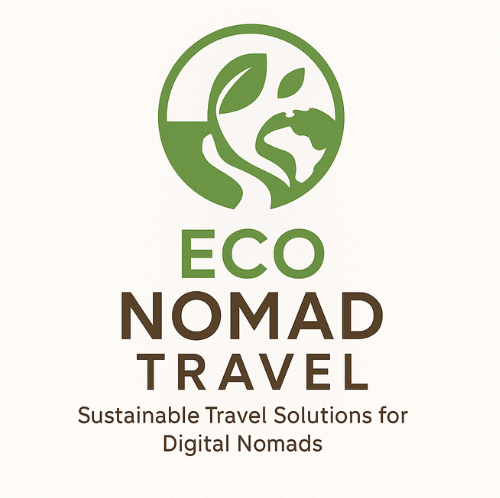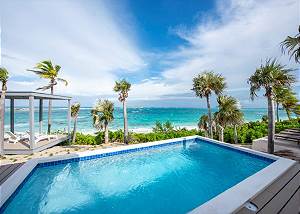
Sustainable Travel: 15 Smart & Simple Ways to Make a Positive Impact in 2025
Tourism can connect cultures and fund conservation—yet unmanaged demand strains ecosystems and communities. Use this expanded guide to cut emissions, avoid waste, and support local livelihoods while planning memorable, low-impact trips. We go beyond slogans with workflows, route design, and on-the-ground tactics that actually work.
Every section below adds depth: concrete examples, planning scripts to copy-paste, and links to our internal guides so you can move from intention to itinerary quickly. Bookmark this page and reuse it for every trip—your future self (and the places you love) will thank you.
Disclosure: some links are affiliate; we may earn a commission at no extra cost to you.
Quick Navigate
- Why Sustainable Travel Matters
- What Is Sustainable Travel?
- Sustainable vs. Traditional Tourism
- 15 Ways to Travel Sustainably
- Real-World Destinations
- Packing for Sustainability
- Future & Tech Trends
- Why Slow Travel Wins
- Choosing Responsible Operators
- Beyond Eco-Lodges
- Food Choices & Impact
- Long-Term Habits
- Advanced Planning & Ripple Effects
- Conclusion
Why Sustainable Travel Is More Important Than Ever
Travel demand has rebounded, but so have the pressures: crowded hotspots, stressed water systems, and fragile habitats receiving more visitors than they can absorb. A sustainable approach shifts the focus from “doing everything” to “doing the right things”—fewer hops, cleaner modes, and spending that empowers communities rather than extracting from them.
This is not about sacrificing joy. It’s about designing trips that are more joyful: less logistics, more neighborhood time; fewer checkouts, more conversations with market vendors and guides. That’s the essence of sustainable travel—lighter on the planet, richer for you.
New here? Start with our Eco-Friendly Travel Tips and Low-Impact Travel Habits, then return to this mega-guide when you’re mapping a real itinerary.
What Is Sustainable Travel?
Sustainable travel balances environmental integrity, social responsibility, and local prosperity. In practice, that means choosing clean, reliable transport; staying in transit-served neighborhoods; supporting small businesses; and reducing waste with a circular packing kit. It’s a playbook, not a purity test.
We ground this playbook in transparent disclosures and visible infrastructure: Is there a metro line to your lodging? Do park rules protect wildlife? Does your host publish water/energy data? If the answer is “yes,” your daily choices become effortlessly low-impact.
To see the method end-to-end, browse our: Green Travel Guide 2025, Sustainable Travel Guide, and Carbon-Neutral Travel Guide 2025.
Sustainable Travel vs. Traditional Tourism
Traditional itineraries often optimize for the count of places visited. Sustainable itineraries optimize for quality and feasibility: fewer bases, deeper immersion, and rail-first planning to remove stress and emissions. Think car-light (or car-free) city bases and day-trips by train rather than constant check-ins and airport transfers.
Run a door-to-door comparison before you book. Under ~800 km or ~6–7 hours by rail, trains often beat short-haul flights when you account for security, boarding, and getting to/from airports. Use our analysis: Train vs Plane Emissions 2025, and jump to our sleeper playbook: Book European Sleepers.
Night trains bundle transport + lodging. See network growth in Night Trains in Europe.
15 Smart & Simple Ways to Travel Sustainably
1) Choose Eco-Friendly Accommodations
Prioritize places that publish energy mix, HVAC efficiency, and water stewardship—and are walkable to transit, markets, and coworking. A central location lets you swap daily rides for pleasant walks, slashing emissions without thinking about it.
Skip vague “green” badges. Look for specifics: laundry-on-request, refill stations, waste sorting by type, and timer-controlled lighting. If a property can’t answer simple questions, choose another. Deep dive: Avoid Greenwash.
2) Embrace Slow Travel
Anchor yourself in one or two base cities. Day-trip out and back by rail or bus. This reduces repacking, keeps costs predictable, and opens time for real life: weekly markets, public pools, neighborhood bakeries. Slow travel is not doing less—it’s doing better.
3) Use Public Transport & Shared Rides
Plan with the local network map first, then add bike-share and walking routes. Where cars are necessary, group trips and EV rentals minimize impact. For stress-free arrivals, pre-book an efficient transfer: Kiwitaxi.
4) Support Local Businesses
Spend where ownership is local—guesthouses, artisans, neighborhood cafés, independent guides. You’ll get better stories, better food, and your money stays in the community.
5) Avoid Single-Use Plastics
Carry a purifier bottle, compact cutlery, and a collapsible container. Choose solids—shampoo/conditioner bars, toothpaste tablets—to simplify security and eliminate plastic. Guides: Zero-Waste Packing 2025, Eco Travel Kit.
6) Respect Wildlife & Habitats
Observe at a distance; never touch, feed, or ride. Wear mineral sunscreens on reefs. Book with operators who publish distance rules and reinvest in conservation. Read: Reef-Safe Sunscreen Guide.
7) Eat Seasonal & Plant-Forward
Local produce lowers emissions and amplifies flavor. Try lunch menus, markets, and family eateries; bring your container for leftovers. A plant-forward default reduces impact without sacrificing variety.
8) Travel Off-Peak
Shift trips to shoulder months for fewer crowds, cooler temps, and happier locals. Your photos improve—and so does your footprint.
9) Measure → Reduce → Offset
Make big decisions first (mode and hops), then offset judiciously. Only buy high-quality credits and retire them in your name. Framework: Carbon-Neutral Guide.
10) Pack Light & Smart
Versatile layers, neutral palette, repairable footwear, and a weekly maintenance routine. Every kilogram you leave at home saves fuel and hassle. See our digital-nomad carry-on capsule.
11) Conserve Water & Energy
Short showers, moderate HVAC, closed blinds, and daylight exploration. Ask for laundry-on-request and line-dry where possible.
12) Learn & Respect Local Culture
A handful of phrases changes everything: markets open up, directions are clearer, and you’ll be steered to places chains can’t replicate. Dress codes matter—especially at sacred sites.
13) Volunteer Ethically
Prefer community-led projects and transparent NGOs over short-term photo-ops. If time is limited, donate to groups locals recommend.
14) Stay in Certified Green Destinations
Use countries and cities with strong frameworks—Slovenia, Costa Rica, Bhutan—as models. They set expectations for access, conservation, and community benefit you can then seek elsewhere.
15) Share Responsibly
Skip geotagging fragile locations. Promote off-peak travel, public transport, and refill culture. Your posts can make things better—or worse.
Affiliate disclosure: using these links never changes your price and helps keep guides free.
Real-World Examples of Sustainable Destinations
Costa Rica
Costa Rica marries biodiversity with policy: extensive protected areas, renewable energy dominance, and a mature ecotourism sector. Choose lodges that publish water and energy data and operators that enforce wildlife distance rules. You’ll find unforgettable experiences that directly fund conservation.
Route tip: Use domestic buses and shared shuttles between hubs; base near reserves to swap long drives for dawn walks with local guides.
Bhutan
Bhutan’s model ties tourism to well-being (GNH) and conservation, resulting in a rare carbon-negative nation. The daily tariff funds protected areas and cultural preservation. Expect small-group, quality-over-quantity experiences and mindful visitor behavior baked into the system.
Slovenia
Ljubljana’s car-light core, national green certification, and well-connected rail network make sustainable travel intuitive. Base in the capital and use trains to reach alpine towns; you’ll enjoy nature without battling traffic or parking.
Find more places and route ideas in our Eco Travel Places 2025 Guide and Sustainable Adventures Guide.
Packing for Sustainable Travel
A dialed-in kit unlocks low-waste habits automatically: purifier bottle, solids (shampoo/soap), compact utensils, and a collapsible container for markets and leftovers. Add a lightweight micro-towel, fabric napkin, and a small repair kit (needle, thread, tape) to extend the life of your gear.
Choose durable fabrics—merino, hemp, organic cotton—in a neutral palette so pieces mix easily. Maintain the kit weekly: refill, air garments, and repair loose seams before they fail. Guides: Zero-Waste Packing 2025, Eco Travel Kit.
The Future of Sustainable Travel
Regenerative travel is scaling—visitor fees fund habitat restoration and heritage projects. Operators publish impact reports and invite guests to join workdays or learning walks that deepen understanding.
Green nomad hubs are crafting walkable work-life ecosystems—coworking on tram lines, apartments with heat pumps and sorting, and neighborhood markets within a 10-minute walk. See Workation Cities Without a Car.
Technology now routes travelers via lower-emission modes, suggests refill points, and estimates leg-by-leg CO₂ so you can optimize before you book.
Why Slow Travel Wins
Staying longer amortizes your highest-impact leg (the initial flight) and frees you from the repack-transfer-check-in loop. You’ll discover parks at quiet hours, talk to craftspeople, and actually rest. That’s not a compromise—it’s the point.
Combine fast intercity trains with night services to bundle lodging. Begin with Night Trains in Europe and our Sleeper Booking Guide.
How to Choose Responsible Tour Operators
Ask for small-group caps, local-guide employment, wildlife distance rules, and leave-no-trace policies. Request specifics—vague claims are a red flag. Bonus points for GSTC-recognized standards and public impact reports with measurable goals.
Script you can copy: “Hi! We choose small-group, conservation-aligned tours. Could you share your wildlife distance rules, group size caps, and if a portion of revenue supports local conservation or communities?”
Sustainable Accommodation Beyond Eco-Lodges
City hotels, hostels, and co-living spaces can be genuinely low-impact if they disclose operations and sit on transit spines. Many chains are moving to LEED buildings and plastic-free amenities—but location is still king. A transit-served, walkable address often beats any gadgetry.
Look for smart HVAC, sub-metering, and sorting stations on each floor. Ask for laundry-on-request and water-saving fixtures. When in doubt, choose smaller, owner-operated stays and read reviews for “walk everywhere” and “right by the tram.”
Food Choices & Their Global Impact
Food miles and packaging add up quickly. Lean into plant-forward dishes, seasonal produce, and neighborhood eateries that source locally. Use your container for take-away and a cloth napkin to skip single-use. You’ll eat better and waste less.
Street markets are ideal for low-impact and high-flavor dining—chat with vendors, ask what’s in season, and try the regional staple cooked a few different ways.
From Trip to Life: Building Long-Term Habits
The best souvenir is a habit you keep: cycling for short errands, buying from local vendors, bringing a bottle and cup everywhere, and repairing gear. Your travel routines can reset how you live at home—and that’s where the largest footprint typically is.
Share learnings in a way that helps: a local’s recipe you brought home, the train route that beat a flight on time and cost, the refill app that worked in multiple countries.
Advanced Planning & The Ripple Effect of Your Choices
Plan earlier, travel cleaner. Early research unlocks lower-emission routes (direct trains/sleepers) and walkable lodging before they sell out. You’ll save money and emissions at the same time.
Spend as a vote. Each purchase can reinforce a local economy that sustains communities year-round. Choose owner-operated, transparent, and repair-friendly businesses—your experience improves, and so does your impact.
Learn from stewards. Join a community walk or restoration day. You’ll see the place the way locals do—and better understand how to care for it.
Conclusion: Be a Traveler, Not Just a Tourist
Sustainable travel is a sequence of better choices—mode by mode, meal by meal, neighborhood by neighborhood. In 2025 and beyond, we can prove that tourism enriches places rather than exhausting them. Start with one rail-first base, pack a circular kit, support local owners, and share responsibly. You’ll come home with deeper stories and a lighter footprint.
Some links may be affiliate; using them never changes your price and helps keep guides free.
Eco Travel Deep Dive 2025 — Methods, Sources, Tools & FAQ
Use this evidence-backed pillar to audit destinations, pick the cleanest feasible routes, and book lodgings that publish real sustainability data. Everything here complements your main guide above.
Disclosure: some links are affiliate; we may earn a commission at no extra cost to you.
Sustainability Framework (What We Measure)
We evaluate destinations by asking a simple question: Can a first-time visitor reliably travel low-impact here with minimal friction? We look for operational proof—transit frequency, walkability, refill access, and published lodging policies—rather than marketing slogans.
- Mobility & Access: Rail/metro frequency, night-train coverage, walkable cores, protected cycling, ferry links.
- Lodging Operations: Energy mix, HVAC controls, water-saving, waste sorting, laundry-on-request, refill stations, proximity to transit.
- Nature & Culture: Park rules, reef-safe enforcement, wildlife distance protocols, visitor caps, community protocols.
- Local Economy: Owner-run stays and tours, fair labor, transparent pricing, community reinvestment.
- Visitor Load: Overtourism management, timed entry, shoulder-season promotion, neighborhood protections.
We down-rank places where claims aren’t backed by transparent, verifiable practices.
Destination Scoring Matrix (Traveler-Facing)
Use this matrix to compare candidate bases. Scores are directional; always read operator notices before you book.
| Category | Signals of Excellence | Traveler Questions |
|---|---|---|
| Mobility | Frequent rail/metro, night trains, ferry links, safe cycling, walkable core | “Can I move daily without a car? Are late trains reliable?” |
| Lodging | Energy/water disclosures, HVAC controls, refill points, waste sorting, transit-served | “Do they publish resource data? Is it a 10–15 minute walk to transit?” |
| Nature/Culture | Enforced rules, trained guides, caps/permits, respectful visitor protocols | “Are distance rules enforced? Are fragile areas protected?” |
| Community | Local ownership, fair labor, transparent taxes/fees, reinvestment | “Does my spend stay local? Are tours led by residents?” |
| Load Management | Shoulder-season campaigns, timed tickets, spread-the-load itineraries | “Are there tools to avoid peak congestion?” |
Trip-Planning Workflow (Step-by-Step)
- Pick bases on rail/ferry corridors: 1–2 hubs, day-trip radius, easy night-train connections.
- Compare door-to-door time: Under ~800 km, rail often beats flights on total time and CO₂. See Train vs Plane.
- Book transit-served lodging: Prioritize properties publishing energy/water and offering laundry-on-request. Read Avoid Greenwash.
- Pack a circular kit: Reusables + solids/refills + purifier bottle. Use our Zero-Waste Packing List 2025.
- Measure → avoid → reduce → offset: Follow the framework in our Carbon-Neutral Guide.
Affiliate disclosure: we may earn a commission at no extra cost to you.
Data Sources & Outbound References
We synthesize official operator notices, city data portals, conservation authorities, and GSTC-aligned standards. When sources conflict, we favor primary documents and current operator advisories.
- UNWTO & WTTC sustainability reports (macro trends)
- Rail/ferry operators (timetables, electrification, night-train expansions)
- National/marine park authorities (permits, wildlife/reef rules)
- City data portals (cycling networks, water & waste programs)
- GSTC-recognized certifications & verified impact reports
Reader tip: confirm seasonal notices right before departure—policies and frequencies can change.


